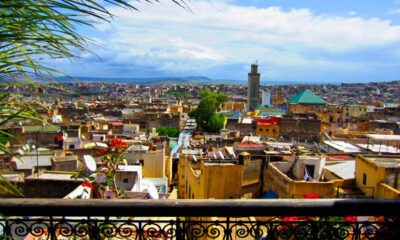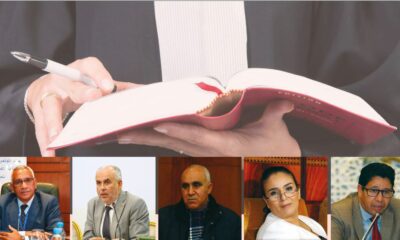Kingdom
Tarik Oualalou: “Building the Largest Stadium in the World Is Fantastic When You’re a Football Fan”
During Science Week 2025 at Mohammed VI Polytechnic University in Benguerir, the chosen architect for the upcoming Grand Stade of Casablanca discussed their perspective and ambitions for this monumental undertaking.

The architecture firm led by Tarik Oualalou has been selected to design the future Grand Stade of Casablanca, an ambitious project that seamlessly blends innovation with Moroccan heritage.
In this interview, he expressed pride in contributing to this endeavor, emphasizing its significance for Morocco and the collective sense of commitment driving this grand venture—particularly in anticipation of the FIFA World Cup scheduled to be hosted in the country.
How did you react to your firm’s selection for the Grand Stade of Casablanca?
With immense honor and humility. This project carries profound importance, and there’s a shared sense of participating in something extraordinary—not just our team, but the project owner, the state, and everyone involved. We’re all part of this remarkable journey. Pride and humility go hand in hand here, as we dedicate ourselves fully to this success. On a personal level, it’s our small contribution to Morocco’s grand World Cup vision.
Beyond that, I’m a lifelong football enthusiast. Designing the world’s largest stadium as a fan is thrilling. This project is a piece of a broader vision championed by His Majesty, executed brilliantly by the Football Federation. We’re simply a small cog in this magnificent machine.
The stadium’s design draws inspiration from a tent. Why this choice?
The tent is far more than a simple structure—it’s not a traditional one, either. Our goal was to encapsulate Moroccan hospitality and the communal spirit seen during events like football matches or a World Cup. Imagine being in the heart of a forest: we aimed to reflect Morocco’s historic tradition of gathering and celebration.
Historically, this is embodied in the “moussem” [a traditional seasonal gathering], an ephemeral meeting in nature where communities unite for festivities. The Moroccan tent is both a cultural symbol and a universal architectural form. We reimagined this ancestral motif into a modern structure symbolizing openness and shared experiences.
How is collaboration with your partners progressing?
Seamlessly. Each partner brings unique expertise. We’re fortunate to collaborate with exceptional teams, including Populous, the British firm with unparalleled stadium design experience. Their technical mastery provides a solid foundation, while our focus lies in the cultural and symbolic resonance of the project.
How will FIFA standards be integrated into this architectural gem?
This stadium is a next-generation facility, adhering to FIFA’s latest guidelines while leveraging advanced global insights from our partners. Our ambition transcends mere compliance: we aim to create one of the world’s finest football experiences—before, during, and after matches.
The stadium is near Benslimane. How does it harmonize with its environment?
Integration with nature was central to our design. The stadium isn’t a dominating presence but a protective space. The tent-inspired roof shelters both spectators and the surrounding ecosystem. Year-round, it will function as a living habitat for wildlife, residents, markets, recreational areas, and fitness trails—a true symbiosis with nature.
How does this stadium address sustainability issues, which have become crucial for Morocco?
I would say there are two aspects. First, we can no longer design sealed, isolated buildings disconnected from the outside world. They must be breathing structures, in harmony with natural elements, protecting and preserving what remains alive. This, in my view, is essential. Second, there is a more technological dimension: using the most advanced systems in terms of energy efficiency, water recovery, and smart irrigation. These are concrete, measurable solutions that meet certification standards.
The goal is to surpass current benchmarks and make this project exemplary, reflecting the authorities’ commitment and aligning with FIFA’s vision for such events. That said, this technological approach represents the minimum standard all buildings should achieve today. Beyond that, we must rethink our relationship with nature—and this is where architecture finds its true purpose.
What is the current progress of the project? Aren’t the timelines tight?
There are established deadlines for the project, which are strictly being adhered to. The project owner aims to outperform expectations, as is common with many projects in Morocco today. So far, progress is excellent in this regard. Earthworks are complete, and we are now entering the structural construction phase, which will give shape to the project.
How has Morocco shaped your architectural style?
I am Moroccan—that says it all. I embody Morocco wherever I go. It’s not a matter of style but of deep identity. Being Moroccan transcends clichés of traditional architecture—the arches, green tiles, or zellige. Let’s go even further. It’s about our connection to nature, the organization of our communities, and the human body. How we still touch, embrace, sense, hold hands, and create spaces where political and social interactions remain possible.
Morocco is one of the great stages of the 21st century where humanity can reinvent its relationship with the world. I am deeply convinced of this. This is what I carry with me here and everywhere else.













